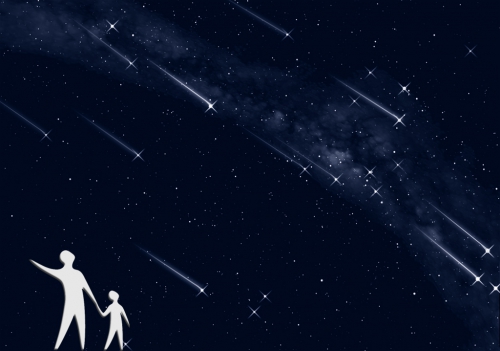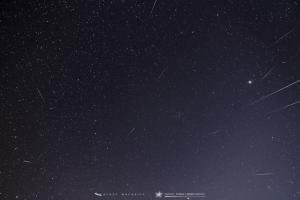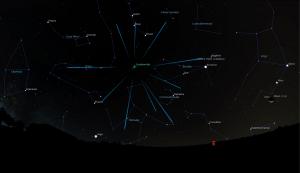
Quadrantid Meteor Shower 2022 - CLOSED
- Where:
- Frosty Drew Observatory
- When:
- Sun, Jan 2, 2022 - CLOSED
- Cost:
- $5 Suggested Donation per Person
UPDATE: January 2, 2022 12:43 pm ========
Due to the continued forecast for clouds and generally overcast conditions, Frosty Drew Observatory and Science Center will stay closed tonight. Locations further north may have clearer sky conditions, but our location will be under clouds. We will open next on Friday, January 7, 2022 for our regular Stargazing Nights event. We'll see you then!
===========================
The Quadrantid Meteor Shower is one of the best (if not the best) meteor shower of the year. Quadrantid Meteors are bright with a greenish hue, many of which are fireball meteors. This year's skies are up for grabs at this point. The Quadrantid peak is quite brief, only about 3-6 hours in duration. The Moon will be in its New phase, leaving the sky dark all night long. Peak times are currently forecast for 1:00 pm EST on January 3rd, which is rather unfortunate as the peak will occur during daylight hours. The Quadrantid shower is quite lively producing upwards of 120 meteors per hour during the peak when the Moon is not present. But in 2022, the best times to catch meteor activity will be during the morning hours of Monday, January 3rd. Peak forecasts are not solid, and are generally a scientific guess, so we aren't totally without hope for a spectacular view.
The Quadrantid Meteor Shower has a very brief peak period, lasting only 3-6 hours in duration. Timings of the peak period have a significant impact on how awesome the shower will be. The radiant point of the shower, the defunct constellation Quadrans Muralis, is located in between the handle of the big dipper and the constellation Bootes. This region of the sky sits on the north horizon at 8:00 pm for our location, and will ride the NNE horizon until about 9:30 pm. The higher in the sky the radiant point the better the shower. Predictions of the peak window will become available as the meteor shower approaches. We will update this section with the predicted window of opportunity at that time.
Temperatures will be cold so be sure to dress warm! Winter coats, long johns, thick socks, hat, gloves, good winter shoes, and blankets (while observing meteors) are a necessity. Be sure to bring a blanket to lay on or a reclining chair for optimal meteor observation.
Take a minute to read up on visiting the Frosty Drew Observatory and catch up on what to / not to bring and how to adequately prepare for a comfortable nigh of meteor watching.
Please note that we do not allow any white lights on our campus from dusk - dawn. This is to ensure an equally awesome view of the night sky for all as well as to allow for the use of light sensitive astronomical equipment. Learn more about why we have this requirement in The Red Light District
Grab those binoculars, dust off that telescope, and join us under the beautiful dark skies at Frosty Drew Observatory and kick off the year with the Quadrantids!


